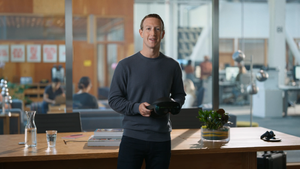Carrier neutral exchanges have gone from a frumpy off-the-rack service to a custom, tailored fit and finish
November 6, 2012

NEW YORK -- Ethernet Expo 2012 -- Just three years after it was all the rage at Ethernet Expo Americas 2009, the public Ethernet exchange concept has been pushed onto the back burner by the thing it was trying to light a fire under -- long, highly proprietary carrier purchasing patterns.
Instead, as Ethernet Expo Americas 2012 kicks off, Ethernet exchanges are shifting away from being public marketplaces for physical Ethernet interconnection to focus on software-based or cloud-based back-office processing to support privately created interconnections.
“We would not describe ourselves as an Ethernet exchange,” says Paolo Gambini, VP of product management and development at Inteliquent , a statement which shows how much things have changed. Inteliquent started life as Neutral Tandem Inc. (Nasdaq: TNDM), which shortly after its acquisition wholesale operator Tinet in September 2010 described itself as “the largest Ethernet exchange in the world.” (See Neutral Tandem Integrates Tinet.)
Gambini says that merger confirmed Neutral Tandem’s move away from the exchange model, enabling it to leverage Tinet’s wholesale Ethernet platform and its EtherCloud Network-to-Network Interconnection (NNI) platform.
The Neutral Tandem/Tinet merger came at a time when the industry was still excited about the exchange concept, and not long after the model received what was thought to be a major boost from the MEF ’s approval of an Ethernet NNI specification.
“We thought the public exchanges would be a bigger market by now,” says Nan Chen, president of the MEF, and co-founder and president of CENX Inc. , which made its debut as a public Ethernet exchange in November 2009. (See Ethernet Gets a CENX View.) Chen says: “The exchange business has evolved from public operator-neutral exchanges into private exchanges. The public concept till holds great promise, but not as strong as expected. Telecom carrier buying patterns are hard to change. The slow uptake had to do with too many people wanting to sell, not enough wanting to buy.”
"A big reason carriers didn’t buy into the original concept is they didn’t want to open themselves to thousands of potential business relationships; they just wanted a handful of close partners," Gambini adds.
For more, see Page 2While the MEF Ethernet NNI spec set common terms for physical interconnection, Chen and Gambini agree the complexity of processing interconnections and related transactions proved to be the real problem in need of a solution.“No two Carrier Ethernet services are sold on exactly the same terms,” Chen says. “The systems and processing piece -- how to order a circuit, track order, test, configure, monitor -- how to make it work as a business transaction is more difficult than the physical interconnection.”
Both Inteliquent and CENX say they are now more focused on solving those issues. “We [Inteliquent] develop master agreements that shield the complexity of negotiating international interconnection agreements,” Gambini says. CENX addresses the processing piece through a software-based systems overlay. “As carriers move to a more private exchange model, the OSS is the part that needs the most help. The carrier OSS is still trying to make that transition out of the TDM world,” Chen says.
Beyond carrier-to-carrier NNI, the Ethernet exchange application set seems as promising as ever, with enterprise off-net access, mobile backhaul aggregation for 4G LTE and data center interconnection all providing plenty of opportunities.
Jim Poole, general manager of global networks and mobility at Equinix Inc. (Nasdaq: EQIX), says his company helped persuade the MEF to extend its NNI spec to cover other kinds of connections. “It has applicability to more parties, like cloud-to-network or financial enterprise-to-network,” he says. “What it can do to enable these connections is similar to what the MEF was intending to do for carrier NNI.”
While some of the major players in the Ethernet exchange market have shifted their focus, the public exchange concept may not be completely dead. “When the MEF standardized Ethernet NNI exchange, it sounded to us a lot like the Internet peering we had been doing, but with Ethernet,” Poole says. “The carrier-to-carrier market has been slow to develop, and I won’t say that it won’t increase, but the primary carrier opportunity is with Tier 2 Ethernet carriers crossing into non-core markets. You’ve also got the cable guys, who have had success with Ethernet, and might want to expand their footprints.”
Chen agrees, adding, “The pain is bigger for small carriers looking to expand their reach. They can’t negotiate and process a lot of different agreements on their own, so they could be ready to change their buying behavior more quickly.”CENX also demonstrated with recent investments from Ericsson and Verizon that others in the industry may believe in the new directions Ethernet exchanges are taking, and the future viability of the concept. “Ericsson can help us open the doors on global expansion, and Verizon loves this concept, and feels they can leverage our services, though to be clear, Verizon hasn’t announced anything with us yet.”
— Dan O'Shea, Special to Light Reading
You May Also Like









